Breathing space
I'm making my life a little easier for the next couple of weeks (3 minute read)
I realise that I’ve been working intensely for the last few months and that I’m still well behind on what I planned to do. I’m not going to catch up by driving myself harder, so I’m going to rebalance what I’m doing for the next couple of weeks. For the first half of May, I’ll send out some brief notes and photos instead of my usual articles, once a week for free subscribers and twice a week for paying subscribers.
I’ll be back soon with some great topics I’m excited to share with you. Over the next few months, articles I’m working on include:
an interview with an expert on death cap mushrooms and mushroom poisoning
an interview and review of Shaun Hendy’s new book about New Zealand’s response to COVID-19
more on gene technology, including a reflection on lessons from New Zealand’s Royal Commission on Genetic Modification
a look at the science and ethics of de-extinction
the plants in one of ancient Rome’s most stunning surviving paintings
inspirational stories of local environmental action in Wellington.
I will also be celebrating five years writing The Turnstone in late May. I haven’t yet decided how I’ll celebrate – let me know if you have any ideas.
In the meantime, here are a few snippets to enjoy.
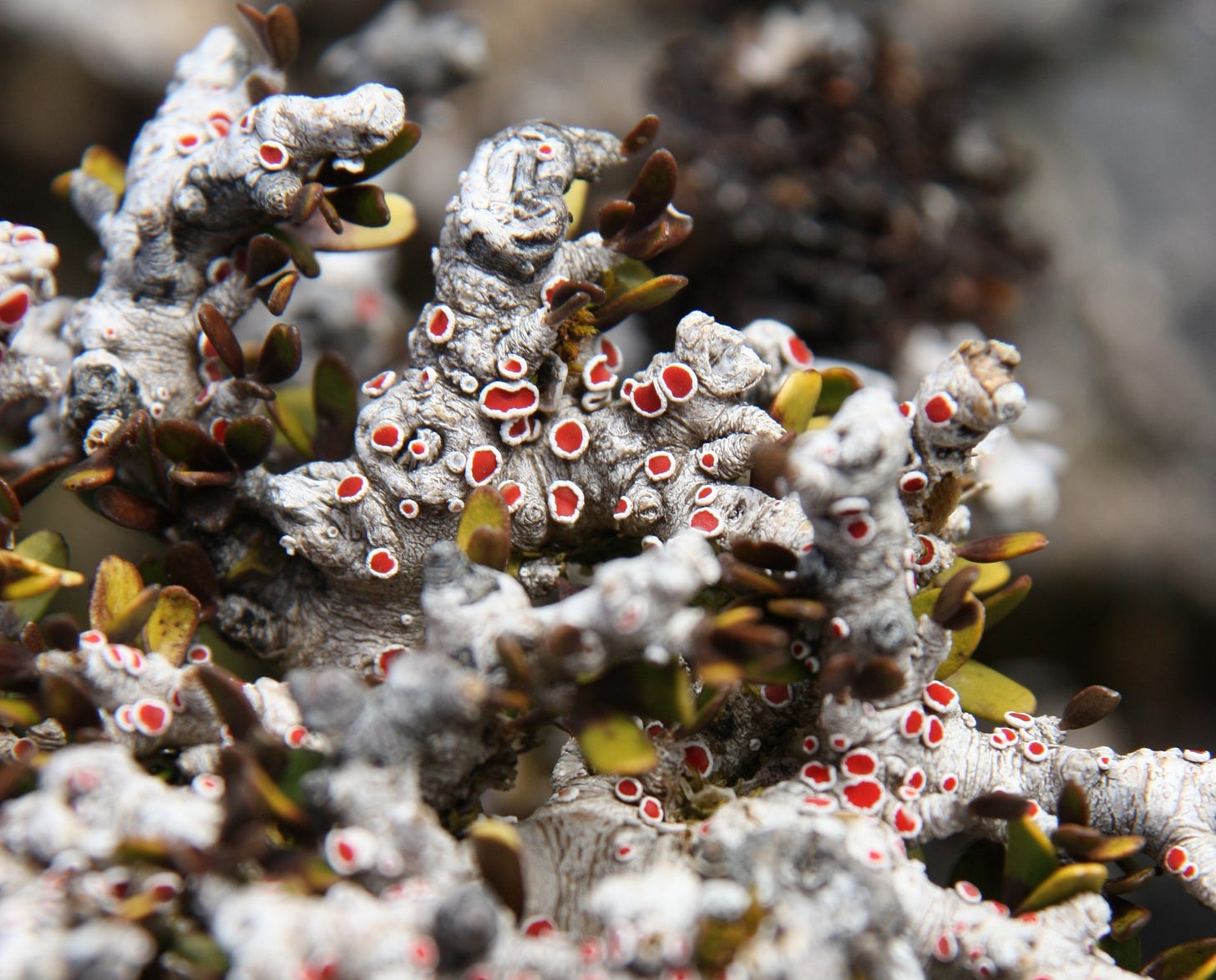
From my photo files
Following on from last week’s article about less obvious forms of life, here are a few more lichens. The top left image contains, as far as I can tell, three different kinds of lichen as well as a moss. The grey blob in the centre of the top right image is a lichen, the rust-coloured patches are algae and the green patch is a moss. The bottom left image contains one of the lichens which partners with bacteria rather than algae, growing amongst moss. The bottom right image is just lichen, possibly one named Stereocaulon.
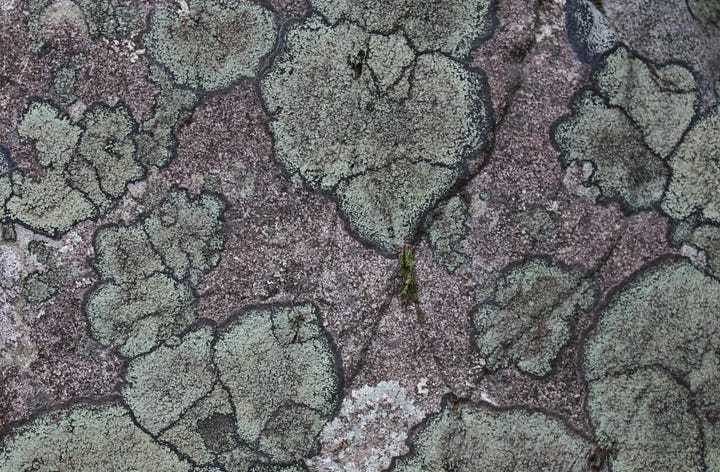
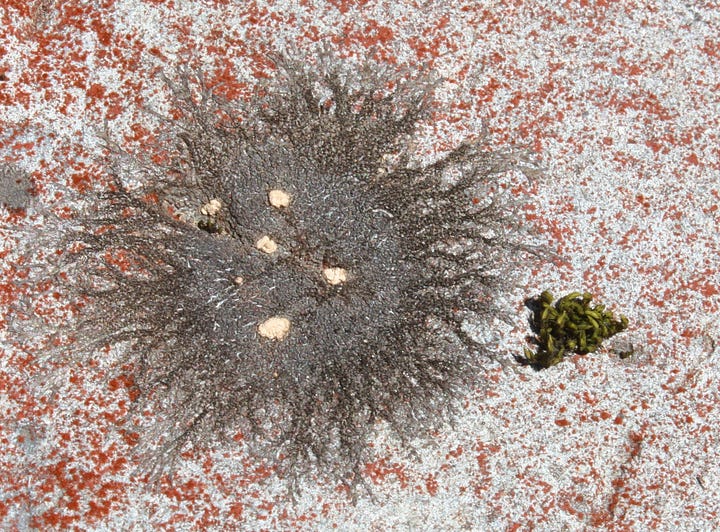
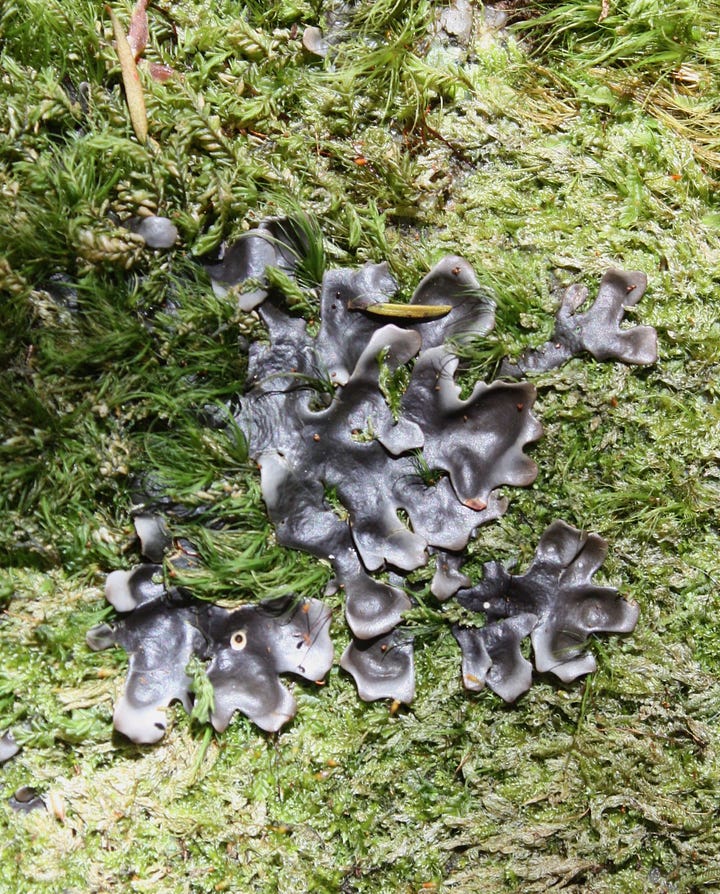
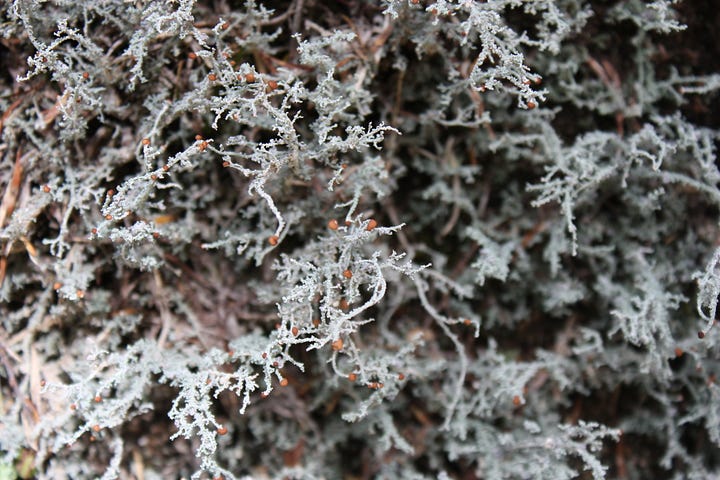
From iNaturalist: good news
While I was putting together information for the City Nature Challenge, I learned that there are dozens of species suspected to be extinct which have been rediscovered by citizen scientists using iNaturalist. I wondered whether this had ever happened in New Zealand, and soon found a delightful story about an enigmatic moth.
The frosted phoenix is a medium-large moth with whitish markings giving its wings a frosted appearance. Until recently, only ten specimens had ever been seen and it hadn’t been reported since 1959. Almost nothing was known of its biology, and it was possibly extinct, given the extensive moth surveys which had been undertaken since 1959.
Then, in March of last year, a Swedish tourist, photographed a moth attracted to a light on his balcony at a motel on Rakiura/ Stewart Island. He uploaded two photos to iNaturalist and created a sensation among entomologists. It was a frosted phoenix.
Since then, there have been further finds on Rakiura, as well as in the Pureora Forest and on Hauturu/ Little Barrier Island. It really seems as if it’s risen from the ashes.
Link to the report from Rakiura, with photos of the moth
From the archives
I wrote these two articles, about the history and impact of ferrets, stoats and weasels in New Zealand, back in 2021. However, they are just as relevant today. Since many of you may not have seen the articles, I’m sharing them again here.
We are having some success in controlling these introduced predators, and have seen a resulting recovery in some native bird populations. But we can’t afford to turn our backs or reduce our efforts. If we do, our tentative progress, and many endangered birds, will be wiped out.
Deadly trinity
In 1867, at a meeting of the Otago Acclimatisation Society, Francis Dyer Rich made a controversial suggestion. The society, he suggested, should not be supporting any further introductions of rabbits. “To give rabbits, indiscriminately, to all persons who applied for them, would create a great evil
Deadly trinity: part two
Many years ago, I attended a conference about the eradication and management of invasive species on islands. There, I heard a presentation about feral cat eradication. Although I don’t remember the speaker’s name, I do remember the message. Eradicating cats from islands, he said, required a real understanding of their behaviour, an understanding that, i…







My 9 y.o. son has been asking lots of questions lately about weasels, stoats, and ferrets. The linked article was very timely and answered many of those questions. I read the article to him in full. I’m enjoying this dip into the archives, so thank you.
We'll leave a light on for you!